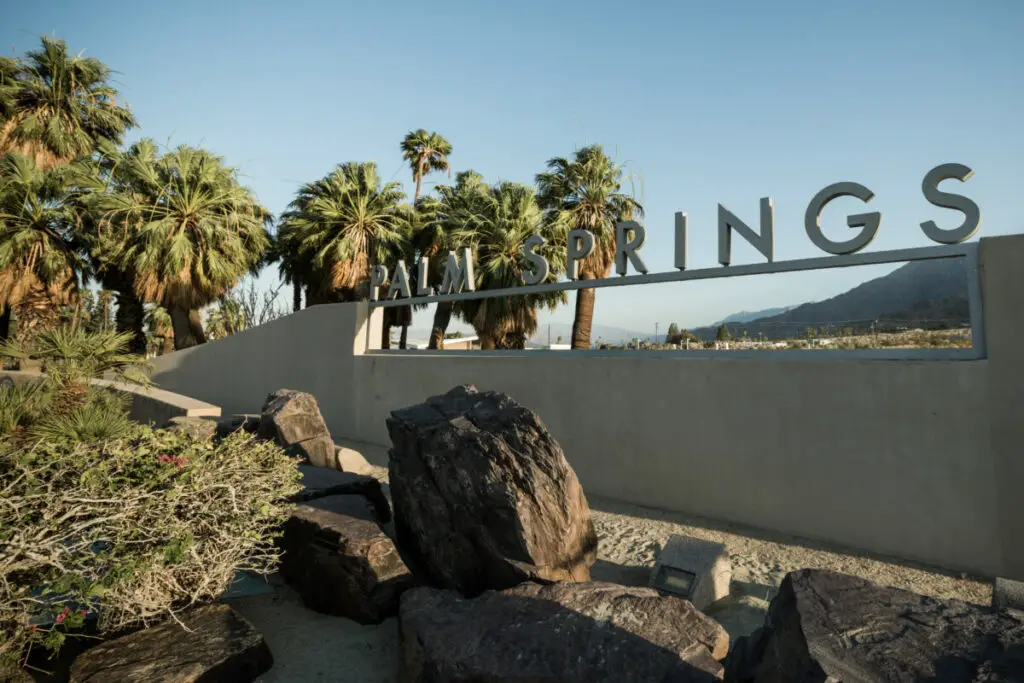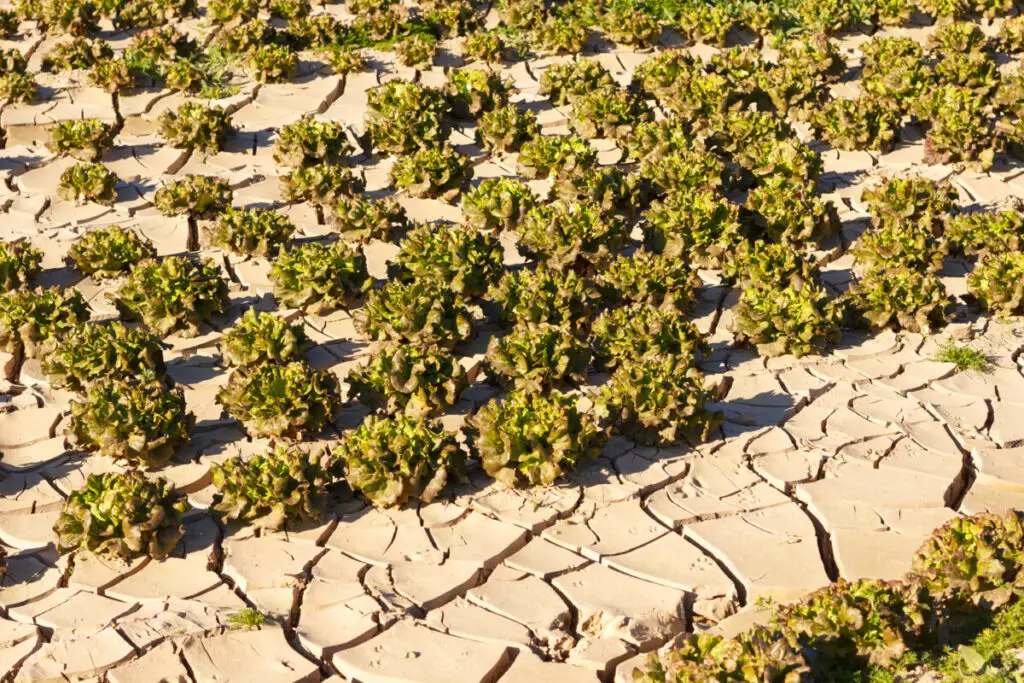
Palm Springs, California is a beautiful place that many have recently decided to move to. Between the beautiful palm trees, great atmosphere, and warm weather, it seems like the perfect place to be! Although, there are many downsides to living in Palm Springs. Here are 17 reasons NOT to move to Palm Springs, California.
17. Extreme Heat
It’s no surprise that some parts of California are barren deserts. Palm Springs is one of the many deserts in California. Due to this, the heat in the area is quite extreme. Although the desert makes Palm Springs unique and beautiful, that desert heat can be challenging for those who are not used to high temperatures.
in the area is quite extreme. Although the desert makes Palm Springs unique and beautiful, that desert heat can be challenging for those who are not used to high temperatures.
The heat in Palm Springs tends to be a dry heat. That being said, there will be weeks where it is a very humid heat due to Palm Springs getting some of its weather changes from the Gulf of Mexico. The outside temperature can get as high as 120°F, making the asphalt outside over 160°F, which can cause second-degree burns.
While this extreme heat does not last forever, it is consistently in the forecast for about 3 months out of the year. So, during July, August, and September, plan on doing all outdoor activities early in the morning and avoid going out in the late afternoons as this is when the temperature is at its highest.

16. High Winds
Palm Springs sits right in the middle of what locals call “the pass”, which is a large wind tunnel . There are a lot of wind turbines in this area because of that wind tunnel. Not all of Palm Springs will have this issue, but a good majority of the area will.
. There are a lot of wind turbines in this area because of that wind tunnel. Not all of Palm Springs will have this issue, but a good majority of the area will.
It has been reported that January and March are the windiest months of the year in Palm Springs. The wind usually begins in the morning, peaks in the early and late afternoon, and subsides by the evening. Now, wind may not seem like that big of an issue, especially if it is renewable energy, but this wind is in the desert. This means that there are dust storms and many dust particles in the air. This can make it hard for those with asthma or other medical conditions to be outside.
The dust and dirt from the Palm Springs Desert are very fine, so they get into everything, including your home. This means that air systems need to be regularly cleaned out and the house will need to be cleaned quite often. It has been said that even with all windows and doors shut, residents still find a lot of dust within the home.
15. Lack of Rain
Palm Springs doesn’t get a lot of rain. Lack of rainfall can pose its own challenges, even in the desert. This lack of rainfall can cause large droughts, not just in Palm Springs, but all over the state of California. This means that water supply can become scarce and even cause a state of emergency if water levels get too low. In recent years, there has been caution on water usage and warnings of a drought, but there hasn’t been a state of emergency due to droughts.
On average, Palm Springs sees about 15 days of rainfall annually. When Palm Springs does see rainfall, it can come quite quickly and quite heavily. Many drivers in the Palm Springs area are not used to this kind of weather and do not have the proper tires to drive in it, nor do they know how to properly drive in it. This can cause a lot of accidents, making it very dangerous for anyone to be in a vehicle during a rainstorm.

14. Natural Disasters
Natural disasters are common no matter what city you live in, but there can be some severe ones in Palm Springs. As stated above, Palm Springs sees very little rain every year, but the rain it does see can cause major flooding . Due to the lack of rainfall, the roads and drainage systems aren’t built for heavy rain.
. Due to the lack of rainfall, the roads and drainage systems aren’t built for heavy rain.
Another natural disaster that can happen is earthquakes. California is no stranger to earthquakes. California experiences earthquakes daily, but very few tend to be severe ones. This does not mean a severe one won’t happen though.
Palm Springs has its own fault lines and experiences earthquakes pretty often, but most tend to be below a 2.0 magnitude.
The last natural disaster that is common in Palm Springs is landslides. Due to the dust and dirt that gets spread around by major winds, earthquakes that shift the ground, and floods, landslides can happen. These landslides can cause major damage to roads and homes. While landslides aren’t very common, when they do happen, they happen quickly and can cause thousands of dollars in property damage and even injure people.
13. Housing Costs
California in general is a very expensive state to live in. Housing costs have always been outrageous, but in recent years,the economy has made it nearly impossible to afford housing. While the Palm Springs area has relatively low housing costs, that does not mean it’s cheap overall. The cost of homes in this area is about 79% higher than the average housing costs across the nation. Although this is high, it is much lower than the housing costs in the rest of California, which are about 139% higher than average housing costs across the nation.
The average home in Palm Springs, California costs about $940,000. Housing costs have been increasing by over 5% for the past few years and are expected to continue to increase annually. This causes a lot of havoc for those wanting to move into this city.
12. Renting Costs
Housing costs in this city are outrageous, but what about renting costs ? Unfortunately, those are outrageous too. Although, renting costs fluctuate more often than housing costs. So, while housing costs are expected to stay extremely high for years to come, renting costs will fluctuate fairly often.
? Unfortunately, those are outrageous too. Although, renting costs fluctuate more often than housing costs. So, while housing costs are expected to stay extremely high for years to come, renting costs will fluctuate fairly often.
With this being said, it is still California and everything is very high priced in the state. Renting costs are about 40% higher than the national average in this city.

11. High Taxes
California is known for being very expensive in almost every way possible. These high prices include all taxes within the state. Income tax, sales tax, and property taxes are all extremely high, making the cost of living very hard for most people. The Palm Springs sales tax is 9.25%, which makes the price of things go up dramatically. The reason the sales tax is so high is that it is a combination of local, county, and state taxes.
within the state. Income tax, sales tax, and property taxes are all extremely high, making the cost of living very hard for most people. The Palm Springs sales tax is 9.25%, which makes the price of things go up dramatically. The reason the sales tax is so high is that it is a combination of local, county, and state taxes.
Property taxes are generally much higher in this city than the national average as well. The best rule to follow is 1.25% multiplied by the purchase price of the property to get around the amount you will be paying in property taxes come tax season.
California’s marginal income tax rate is 13.3%, which is the highest state income tax in the nation. Keep in mind that this tax rate can vary depending on income, grants, and benefits that the individual may receive from the state.
10. Transportation
Palm Springs, California does have a public transportation system called Sunline Transportation that is very well-rated in the area. There are also Ubers, Lyfts, and Taxis, but if you are looking to get from point A to B, you really need some form of transportation . Palm Springs is quite spread out and is not easy to get around or to without a vehicle.
. Palm Springs is quite spread out and is not easy to get around or to without a vehicle.
This can be a hard choice for some people because of how expensive traveling by vehicle can be. Gas prices have been at an all-time high recently and show no signs of coming down in price.
9. Walkability
While Palm Springs has amazing walking trails and scenery, trying to get from point A to B while walking isn’t going to happen. Palm Springs is very spread out, and it is nearly impossible to get anywhere by walking . Downtown Palm Springs is about the only walkable place in the area, but a vehicle will be needed to get there.
. Downtown Palm Springs is about the only walkable place in the area, but a vehicle will be needed to get there.
Palm Springs has a walkability score of 59. This means that Palm Springs is only somewhat walkable. There are many places to enjoy that allow some walkability, but in order to get there to walk around, a vehicle will be needed.

8. Traffic
Due to everything being spread out in Palm Springs and the majority of people needing some form of transportation, there is a lot of traffic on the roads. California has one of the largest populations in the nation, and Palm Springs is no exception. The traffic can get quite bad which can then lead to more accidents. This is also something to take into consideration when rainfall does happen and how many drivers may be on the road.
7. Melting Pot
Palm Springs has a lot of diversity . For some people, this may be a perk, for others, this may be a downside. With diversity comes a lot of different foods, shops, and creations. For the most part, he people in the area are known to be friendly. If you don’t want to live in a city that is racially diverse, don’t move to Palm Springs.
. For some people, this may be a perk, for others, this may be a downside. With diversity comes a lot of different foods, shops, and creations. For the most part, he people in the area are known to be friendly. If you don’t want to live in a city that is racially diverse, don’t move to Palm Springs.
6. Snowbirds
Palm Springs is known for its snowbird community . Many people buy homes in Palm Springs so they can vacation in it during the winter months in order to avoid colder climates. There are also a lot of retirees in Palm Springs who buy their dream homes in this city. This may not seem like an issue at first, but this can cause certain months during the year to get very busy.
. Many people buy homes in Palm Springs so they can vacation in it during the winter months in order to avoid colder climates. There are also a lot of retirees in Palm Springs who buy their dream homes in this city. This may not seem like an issue at first, but this can cause certain months during the year to get very busy.
From October through March, there are twice as many people in the area, which means there is twice as much traffic. This requires you to have a lot more patience than usual, as almost everything is going to take longer than usual.

5. Tourism
The majority of California has a high amount of tourism . Palm Springs is one of the few places that is on and off with tourism, but it has recently seen a huge influx of tourism within the past few years. This can be both a good thing and a bad thing. Tourism helps the economy, but it costs a lot to support tourism as well. Not just that, but due to tourism, there will be a lot of people that turn their homes into rentals, which can cause issues within a neighborhood. There will also be increased traffic due to tourism, which just adds to the already bad traffic problems.
. Palm Springs is one of the few places that is on and off with tourism, but it has recently seen a huge influx of tourism within the past few years. This can be both a good thing and a bad thing. Tourism helps the economy, but it costs a lot to support tourism as well. Not just that, but due to tourism, there will be a lot of people that turn their homes into rentals, which can cause issues within a neighborhood. There will also be increased traffic due to tourism, which just adds to the already bad traffic problems.
4. Politics
California is primarily democrat, and Palm Springs is no exception. Palm Springs is known for its large LGBTQ+ community and its liberal viewpoints. This does not mean that a conservative could not move to the area, but it may be a little bit of a culture shock if the person is not used to liberal viewpoints. Generally, everyone is very kind and accepting of other people’s political beliefs.
3. Education
California does not have a good public education system and actually has one of the lowest graduation rates for high school-aged kids. Palm Springs has some public schools that are better than others, but they all follow the standard California curriculum, which has some flaws. If there are school-aged kids within the family that want to go to a public school, consider moving elsewhere.

2. Outdoors
Good luck having any outdoor furniture or items last more than a couple of years. One of the biggest complaints that most residents have is how often they have to replace outdoor furniture, structures, and items. The heat and the sun make outdoor items wear out quickly. This can cause you to have to spend thousands of dollars every few years because you need to replace outdoor structures or furniture.
outdoor furniture, structures, and items. The heat and the sun make outdoor items wear out quickly. This can cause you to have to spend thousands of dollars every few years because you need to replace outdoor structures or furniture.
1. Water Quality
Water is something that many people are picky about. Good water quality is something that is very important to some people, especially if they are moving from a place that had fantastic water quality. California in general does not have very good water, and Palm Springs actually has some of the worst water in the state.
Tap water is not something you’ll want to drink when living in Palm Springs. The water in Palm Springs won’t kill someone, but it’s also not the safest water to drink either, especially while pregnant or if you have known medical issues. Always make sure the water is properly filtered before consuming it or buy bottled water.

